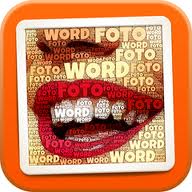In my previous post I talked about an app called WordFoto which allows students to generate a word list and apply those words to a photo. The photo is then made up entirely of words (none of the original image remains). If you would like to view this post click here.
In this post I would like to show you how to take this photo created in WordFoto and add some audio to it using a second app called FotoBabble. After creating an image and applying a set of words to it in WordFoto this image is saved to the camera roll on the iPad. Open FotoBabble and import that image. Once the image is in FotoBabble students can add audio to explain the image and the concepts they have learnt.
The example below has been created by me but is a task my 7/8 Health class will be undertaking this term. The task will be to select an image representing smoking and create a word list in WordFoto and apply those words to the photo. Students will then save this image into the camera roll and import it into FotoBabble. In FotoBabble they will have to record an explanation of 3 words from their list that appear in the photo and why they have used them. My example is quite short for the purpose of this post, students work will be more detailed.
As well as adding audio there are a number of basic formating options within the app including: the ability to enhance the photo, add effects, add frame (free download in app), add stickers (very basic – in app purchase required to get more), rotate the image and add themed wall paper as a background.
Note: Once the audio is completed the image/audio needs to be uploaded to the Fotobabble website. For this to occur a class account needs to be created under the teachers name. Students then use the user name and password to log in on their iPad and upload their work. This works through our school wireless system and is fairly quick and painless.










